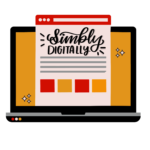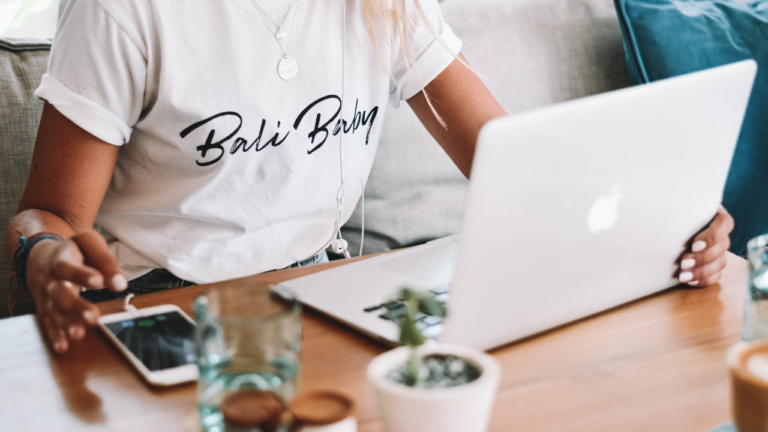My husband and I are the perfect examples of the two type inbox that exists. One with zero unread emails and the other with 2222 unread emails. So, who do you most relate with?
Although my inbox is 90% of the time inbox is clean and managed; I have days where my inbox is unorganized with so many unread emails. It mostly happens because I have the habit to subscribe to various newsletters that looks promising. Another reason is some email subscriptions send daily emails that start piling up if I don’t take immediate action.
After various tests and trials, I implemented few tasks in my daily and weekly routines that help to achieve my inbox zero goal. These tips and tricks reduced my time and stress as well!
Note: I use Gmail for my Personal and Business work so some of these tips may not apply if you use Outlook or another email service. Proceed with caution.
TIPS FOR KEEPING YOUR INBOX ORGANIZED
1. Bulk delete:
This tip is helpful when you have to get rid of emails received for a long time from someone that is not serving you anymore. Here is how to achieve this task.
- Open your Gmail, type their name or email Id and then click on the search icon.
- All the emails that you have so far received from them will appear.
- Click on the first email and select unsubscribe option that you can find on the top of the email beside their email ID. If that option is unavailable, you can unsubscribe by clicking on the unsubscribe button that is available at the end of the email.
- After you unsubscribe, return to the result page. Make a quick check to see that they are no emails like invoice, log in details that are important and have to be saved for reference purpose.
- After that, you can bulk select the inbox and trash them.
- Repeat the above step until you delete all the emails received from that particular sender and similar subscriptions.
This way, you will be able to unsubscribe from further emails, at the same time, get rid of junk emails.
2. Unsubscribing on the first few emails
When you log in to a new app/ tech tool, it is common to receive their confirmation and welcome email. In some apps, you get the option of whether you want to subscribe to a newsletter or not. While for a few, creating an account is equal to signing up for emails. Most of the time, those promotional emails or app update aren’t helpful one. So the tip is to read their first few emails and unsubscribe if you don’t want those emails in the future.
I unsubscribe from the emails received from some senders from the first few emails if they are sales pitches. They are a major turn-off for me if I receive a sales pitch in the second or third email.
3. Separate email for freebies:
This is something that I implemented back in 2017. I created a separate Gmail ID just for subscribing to newsletters, freebies, email courses so that my other email ID is not overwhelmed with too many emails.
Here is how I organize my email IDs:
- Business ID: Clients and business-related emails. (Tools invoice, Payment due date)
- Personal ID: Family email conversation. Use this Id for tasks related to Health, travel, entertainment, Online purchases.
- Newsletter ID: Subscribe to blogger newsletter, freebies, resource library.
When it comes to organizing my Freebie email inbox, I do it every week. For every email I subscribe to, I have a grace period of 6-8 weeks. If I don’t find the incoming emails relevant or informative, I unsubscribe them. This way, I make sure I receive emails that I want and love to read.
4.Creating labels or Folders:
The label is a tag that you can add to every email you receive or send. These labels are helpful to keep your inbox organized. You can apply more than one label to an email.
How to create labels in Gmail?
- Open up your Gmail Inbox
- Click on the Settings icon on the top left column and select see all settings.
- select Filters and Blocked Addresses, there select Create a new filter
- Enter the Folder/Label name. (Example: for client work- you can use client work/ work/ client, for receipts and invoices you can use invoices, for newsletters you can use Mails to open, Newsletter)
- Or you can select a particular email address to label.
- Once you select the label, click create Filter
- Select the label you just created, the category for the email, and select the emails that are already there eligible for that label. That’s it.
You can create as many folders/ labels as you want.


Here is a sample of tag/ Folders I have created:
- Client work – Client emails
- Health -Doctor Appointments, reminders
- Travel – Travel details, confirmations
- Taxation – All taxation
- Invoices – Any invoices received are added to this folder
- Bank – Emails from the bank
- WordPress – WordPress emails about my website and payments.
- Apartment – I live in a rented apartment, all the emails received from them are added to this folder
5. Use stars to Mark important emails.
I am sure you have seen the star icon beside every email you can select if the email is important. However, you can use other formats too.
- Go to settings
- General settings
- Scroll down to stars and select the different kinds of stars you want to use. Click save changes.
I use the Yellow star for important ones, Yellow exclamation for High priority, and Green for important ones resolved.
- If you mark important emails, you can also have an option to see starred emails first in your inbox. To do that, go to settings > inbox > Inbox type : Starred first.

6. Weekly check-ins:
I check my personal and business emails daily so that important emails are addressed and sorted into folders. My business receives emails like Zoom call reminders, app integration emails, Project management summary emails that are deleted or archived right away if they are not important.
Additionally, I set up a 20 min time task on Friday to organize my inbox. I utilize this time to read and sort my newsletter emails from my newsletter email ID and make sure all the business and personal emails are sorted into appropriate folders.
7. Use the Project Management tool for work updates:
During my initial Business days, I used emails as a means of communication with my clients. I was too scared and nervous to ask them to sign up for a project management tool which would have helped us communicate better about the work progress and status.
The downside of this method was if I have to search for a particular email reply or instructions, I had to open every email thread and read. It is not only time-consuming but also disorganized.
Eventually, I started asking my clients to set up their project management tools to keep our project details and resources in one place. I provided them all the video training so that they can learn how to use the tool. Since then, my Emails are clutter-free, have organized folders for each client that I share with them.
Like this post? Be sure to pin this image so you can come back to it later!

